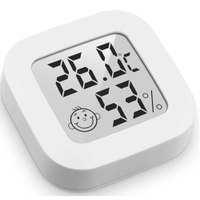What size dehumidifier do I need? How to choose the right capacity for your home
If you're wondering what size dehumidifier to buy, explore our expert guide to help determine which model is best for you
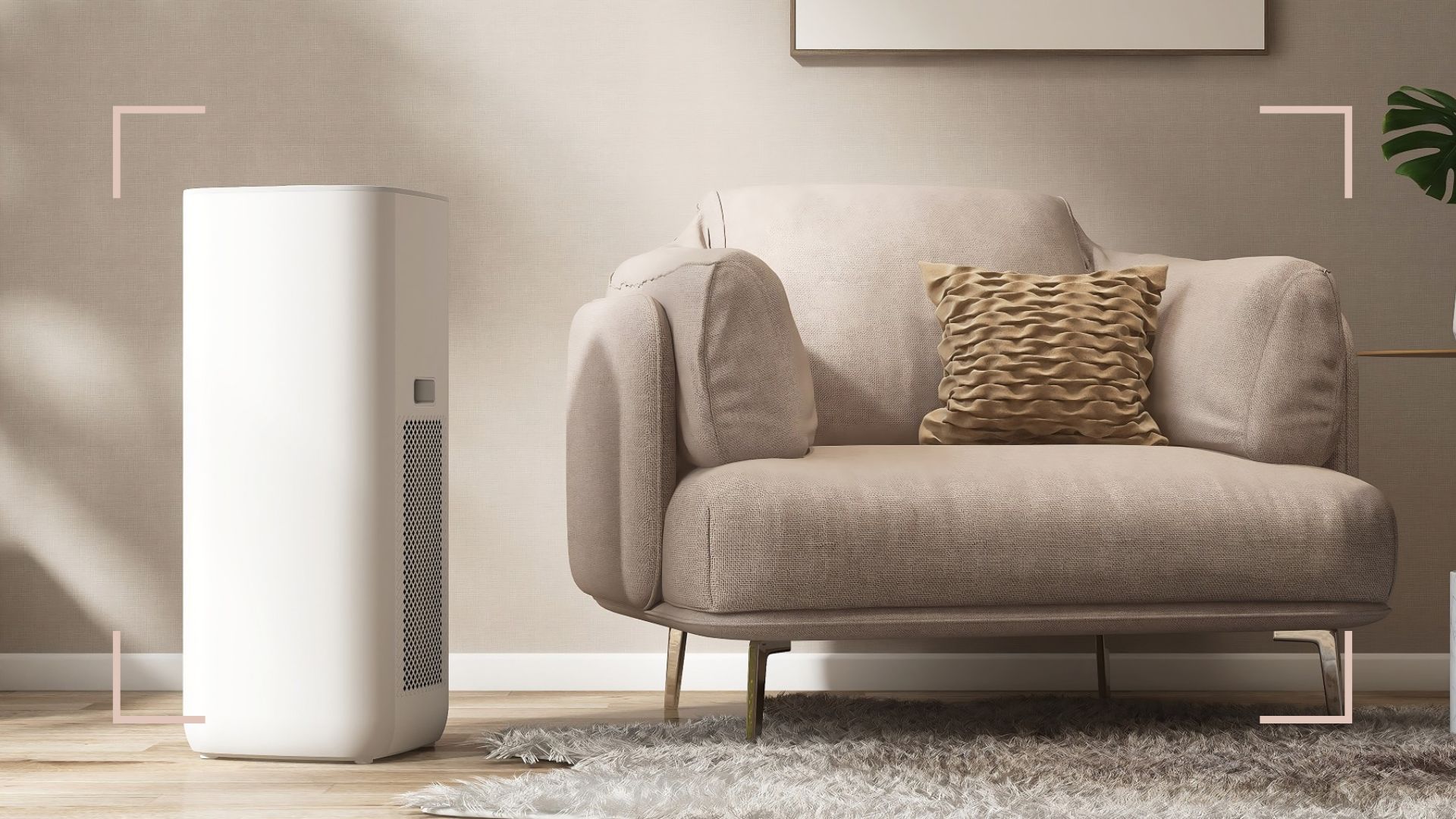
Not all dehumidifiers are made equal; in fact, they come in a variation of sizes and capacities. So if you're asking yourself, 'What size dehumidifier do I need?' let our expert guide aid your decision-making process to help determine the right capacity for your home.
More of us than ever are picking up one of the best dehumidifiers in order to help combat excess moisture in our homes. Because of the way dehumidifiers work, they are adept at combatting and removing excess moisture, which can often creep in during colder temperatures and cause serious problems.
However, as mentioned, dehumidifiers can vary fairly drastically in size, and their size directly corresponds to their capacity for removing moisture. That's why it's important to choose the right size for your property and household activities – choose the wrong size, and you risk the dehumidifier not doing a proper job.
So before you start shopping for the best model take note of how to choose the right size for your home – and then head over to see the best dehumidifier deals available now.
What size dehumidifier do I need?
What you need to know before buying the right dehumidifier for your home is what capacity you need, rather than what size dehumidifier you need.
This is because arguably the most important detail of each dehumidifier is the amount of water it has the capacity to extract per day. As you are browsing through dehumidifiers in-store or online, this is likely to be the number you’ll see alongside the dehumidifier name.
"The 10L, 12L, 20L or 25L refers to the amount of water in litres that the dehumidifier removes from the air during a 24-hour period. It’s not the size of the dehumidifier water tank," explains dehumidifier expert and Meaco’s managing director Chris Michael
Sign up for the woman&home newsletter
Sign up to our free daily email for the latest royal and entertainment news, interesting opinion, expert advice on styling and beauty trends, and no-nonsense guides to the health and wellness questions you want answered.
Take the Meaco Arete Dehumidifier & Air Purifier 25L for example, it only has a tank capacity of 4.8 litres, but has the capacity to remove up to 25 litres (as per the name) in a day, making it a powerful option.
But how can you find out what capacity dehumidifier you really need? Determining the right size dehumidifier for your needs means considering a range of factors – including the specific requirements of your home, and those living within it.

Chris Michael is the Managing Director at Meaco, selling dehumidifiers and heating and cooling products. Chris has been advising on humidity solutions and dehumidifiers since 1991 and is well-known within the dehumidifier industry across the world, as a lead on innovation and sustainability. With a wealth of experience in the industry, Chris is committed to helping provide low-energy and low-noise solutions appliances that improve the lives of customers.
Here are what you need to consider about how and where you plan to use a dehumidifier to determine the size you need..
1. Consider the size of your home
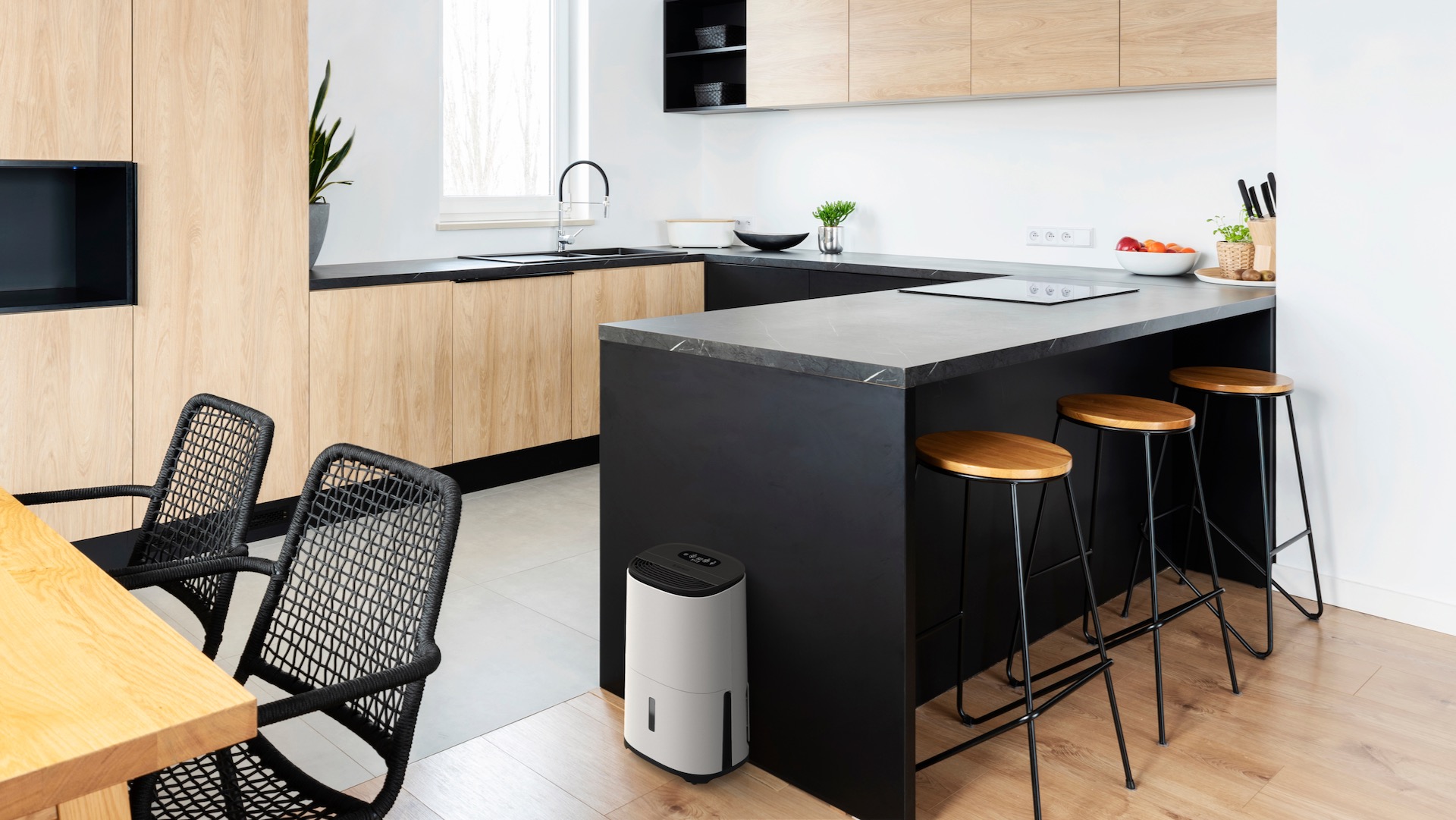
Firstly, you'll need to think reasonably about whether you live in a smaller or larger property; a 1-bedroom flat is unlikely to need the same size dehumidifier as a 4-bedroom house (though there are certain caveats to that, but more on that later), as a larger home simply has the capacity to accumulate more moisture.
"Your dehumidifier needs to be the right size for the room or house," explains appliance expert Brian Johnson at MyJobQuote.co.uk. "For example, a model with a capacity of ten to thirty litres is best for large spaces, while a two-litre one is better suited to a small room, generally speaking."
However, it’s important not to consider the size of your property in isolation – you should also take a moment to think about the general moisture levels inside your home in order to determine what size capacity you might need and why you should buy a dehumidifier to suit.

Brian Johnson has worked as an appliance expert for MyJobQuote for four years, and has worked in the industry itself for over 25 years. Brian continues to work for clients, providing appliance diagnostics and repairs, while also providing expert advice to industry professionals and homeowners.
2. Take note of the moisture levels
"The moisture level and temperature inside your home also affect the size and type of dehumidifier you need," Brian reveals. "If there’s a high moisture level in your house or flat, then you’ll need a bigger size model, as there’ll be more water to take out of the air."
If you're unsure of the moisture levels within your home, Johnson advises that there's usually a fairly easy way to find out. "Telltale signs of high moisture levels inside the home include lots of condensation on windows and slow-drying clothes." You may also have spotted pockets of mould or mildew, perhaps along your window frames.
There's a surefire way to tell though, if you don't feel confident judging your moisture levels yourself. You can pick up a digital hygrometer, which will measure the temperature and humidity levels in your home instantly. They're very easy to use – a little like a thermometer.
Try: Digital Hygrometer Indoor Thermometer, Was £6.59 now £4.99 at Amazon
Unsure of the humidity of your home? To measure more accurately w&h recommends buying this affordable digital hygrometer to gauge temperature and humidity levels.
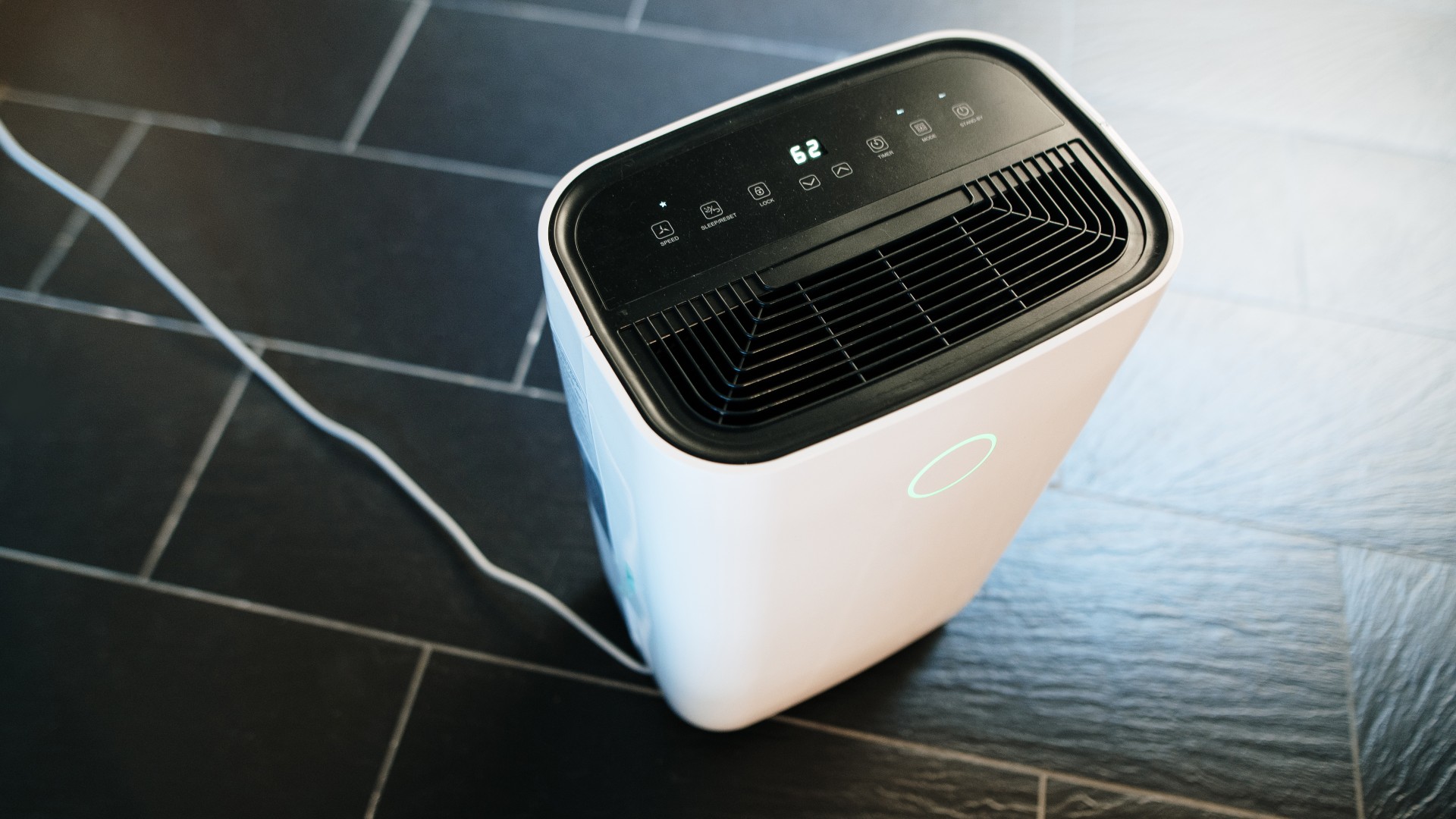
Most experts agree that healthy humidity levels for a home should sit at around 40-60%. If your home is within this range, or towards the lower end of the scale, you may only need a smaller dehumidifier; or you may not need one at all.
Anything below that range and the air in your home is likely to be too dry, which can put you at greater risk of getting ill (given that viruses tend to linger longer in dry air). It can also dry out your eyes and skin, exacerbating conditions such as eczema. In this case, you may need a humidifier, vs a dehumidifier.
If your humidity is too far over 60% consistently, it’s likely that there is too much moisture in the air, which of course, can lead to things like mould and mildew. This of course can have its own health consequences and may be damaging to your furniture, walls and fixtures, too. For consistent humidity levels over 60%, heading towards 70%, you're likely to need a larger dehumidifier.
3. Consider the number of people and functions in your home
One of the biggest contributors to moisture levels in a home is people and the daily things we all do. So think about how often you are adding to the home's moisture levels to determine the size of dehumidifier you need.
"The size of the property is probably the most useful measurement to us when selecting a dehumidifier size, but bear in mind that people, not houses, create moisture indoors from everyday activities – be it bathing, showering, cooking, boiling the kettle, drying laundry and even breathing," says Chris.
"So, the more people in a space, the fewer extractor fans in the kitchen and bathroom, and the more washing being dried indoors, the larger the machine should be.”
Take stock of all of these variables for your home. Are there lots of you in your property, taking multiple hot showers and cooking numerous times a day? If so, you will most definitely need a larger dehumidifier.
However, if you live alone or with just one other person for example, and you work in an office away from home five days a week, you might only need a small dehumidifier, to keep on top of humidity and moisture levels when you cook, bathe, or dry your clothes in the evenings. You might also benefit from trying a few simple tricks to reduce humidity in your home or even seeking the best plants to help with condensation.
4. Do you need your model to be easy to move?
Though the capacity of your dehumidifier is the most important consideration, it's also vital to think about how physically big (or not) you want your appliance to be.
"The physical size of a dehumidifier does matter," says Chris. "A 10L or 12L dehumidifier is smaller, more compact, quieter, and lighter. They can more easily be moved from room to room." Meaning a small model is most likely the best dehumidifier for a bedroom.
"On the other hand, a 20L or 25L model is physically larger, heavier and louder which is why they tend to be positioned in hallways, kitchens or laundry rooms where they are moved less often." But, bear in mind that these larger capacity models – though also physically bigger – will be able to wick away more moisture from your air more efficiently, particularly in a bigger home. So this benefit may be worth the extra noise and size for many households.
When it comes to how much a dehumidifier costs to run, it's worth noting that larger models will be pricier, but the upside is that they'll likely need to run for less time, thanks to their increased capacity.

Do I need a 12L or 20L dehumidifier?
There are lots of different sizes of dehumidifiers, with some models having a capacity of as low as 700ml, and others being able to get rid of up to 25L of water per day, as mentioned.
However, 12L and 20L dehumidifiers tend to be the most popular options, so which might be the right size for you?
"The number of bedrooms is a useful yardstick when deciding what capacity you need," suggests Chris. "A 10L model should be suitable for up to and including a two-bedroom flat. A 12L model would be suitable for up to a regular-sized three-bedroom house. For an average-sized four-bedroom, a 20L is more suitable and for larger properties a 25L."
But as we know, the decision between a 12L and 20L dehumidifier also depends largely on the moisture levels of your home. So, as a guide, Chris explains:
- A 12L dehumidifier is probably a good option for a "house with up to three bedrooms, that is only slightly damp, with light mould and condensation, and a relative humidifier of between 50-60%."
- He also suggests that, whatever size your home is, if you have a moderately damp property – "with 60-70% relative humidity, musty smells, and regular mould and condensation." A 12L dehumidifier is also likely to be satisfactory.
- However, for those with very damp, larger properties with up to three bedrooms, a bigger 20L dehumidifier should be used. This applies to homes with a "70-80% relative humidity, that are always cold, have lots of people in them, and have washing drying in them regularly," Chris says.
- As you may suspect, 20L dehumidifiers are also non-negotiable for homes with very high levels of humidity (80-100%), no matter what the size of your home. Even if you live in a far smaller property, if you have very high moisture levels, it's a good idea to purchase a dehumidifier with a larger capacity.
Put simply, larger models will do a better job at dealing with the amounts of moisture in larger homes, and homes with higher moisture levels (or both) – while smaller models are better for smaller properties, and those with lower moisture levels.
But as mentioned, if you live in a smaller home with a higher moisture level, it may be wise to opt for a larger dehumidifier anyway.
w&h's pick of the best dehumidifiers
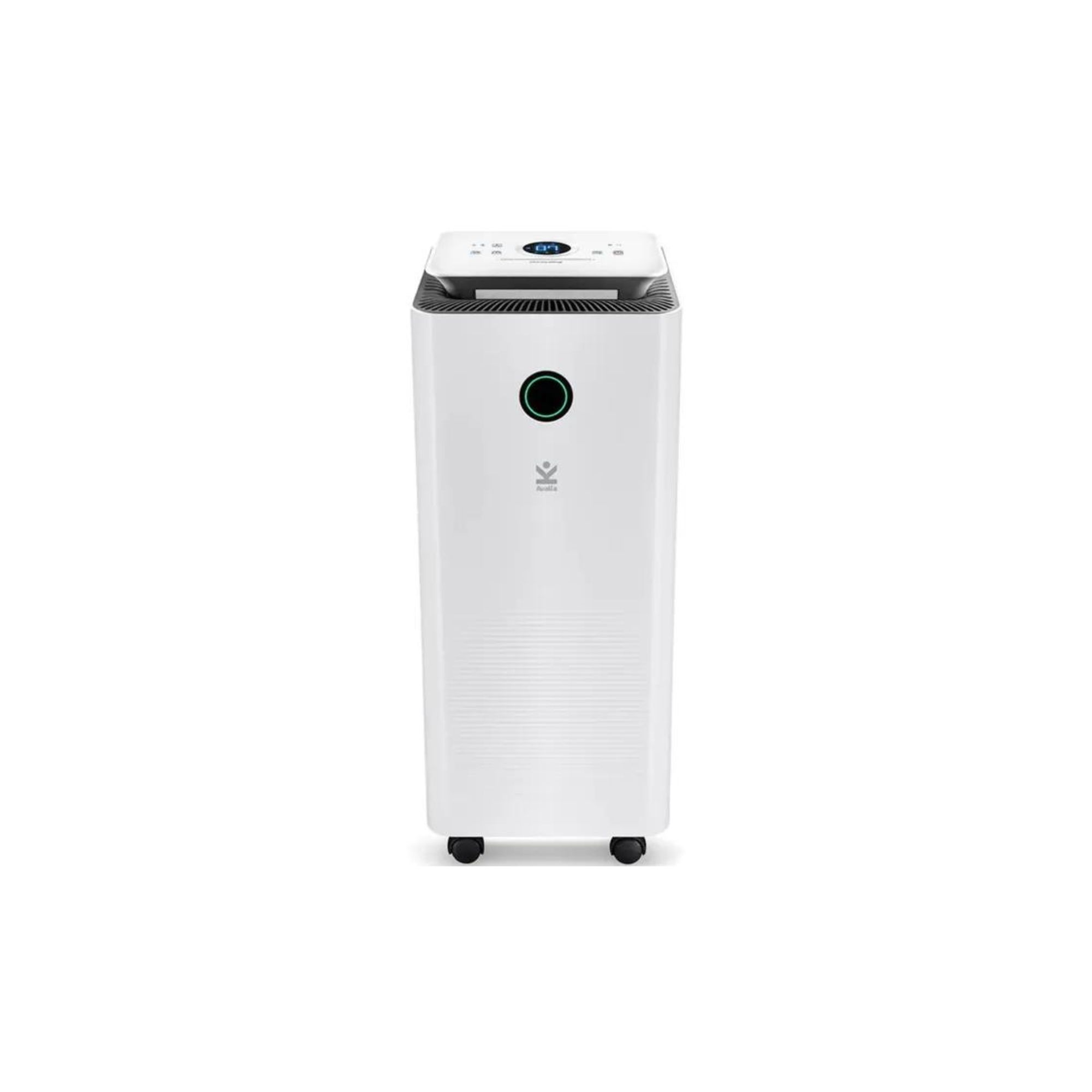
The best dehumidifier overall
If you're looking for a dehumidifier that's large enough to hold at least 16L of water, sleek, space-saving, and will dry your laundry, the Avalla X-150 is your perfect match. Rated the overall best on our list, this machine left the air in our home clean and moisture-free.
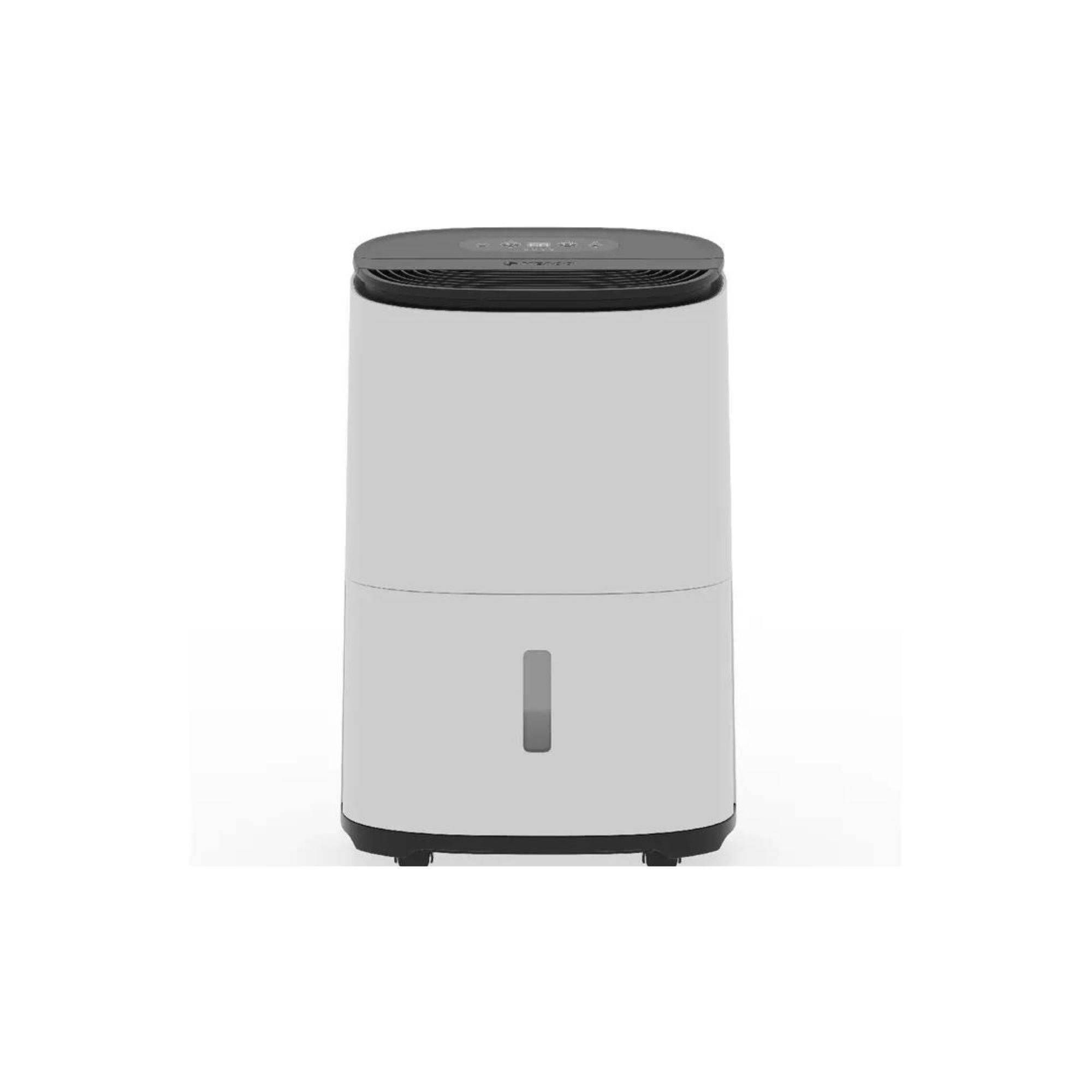
The best dehumidifier for ease of use
The MeacoDry Arete One is an all-around great dehumidifier. It's simple, easy to use, great for families with little ones, and quiet. It even has a laundry mode, handling your home's moisture and wet clothes.
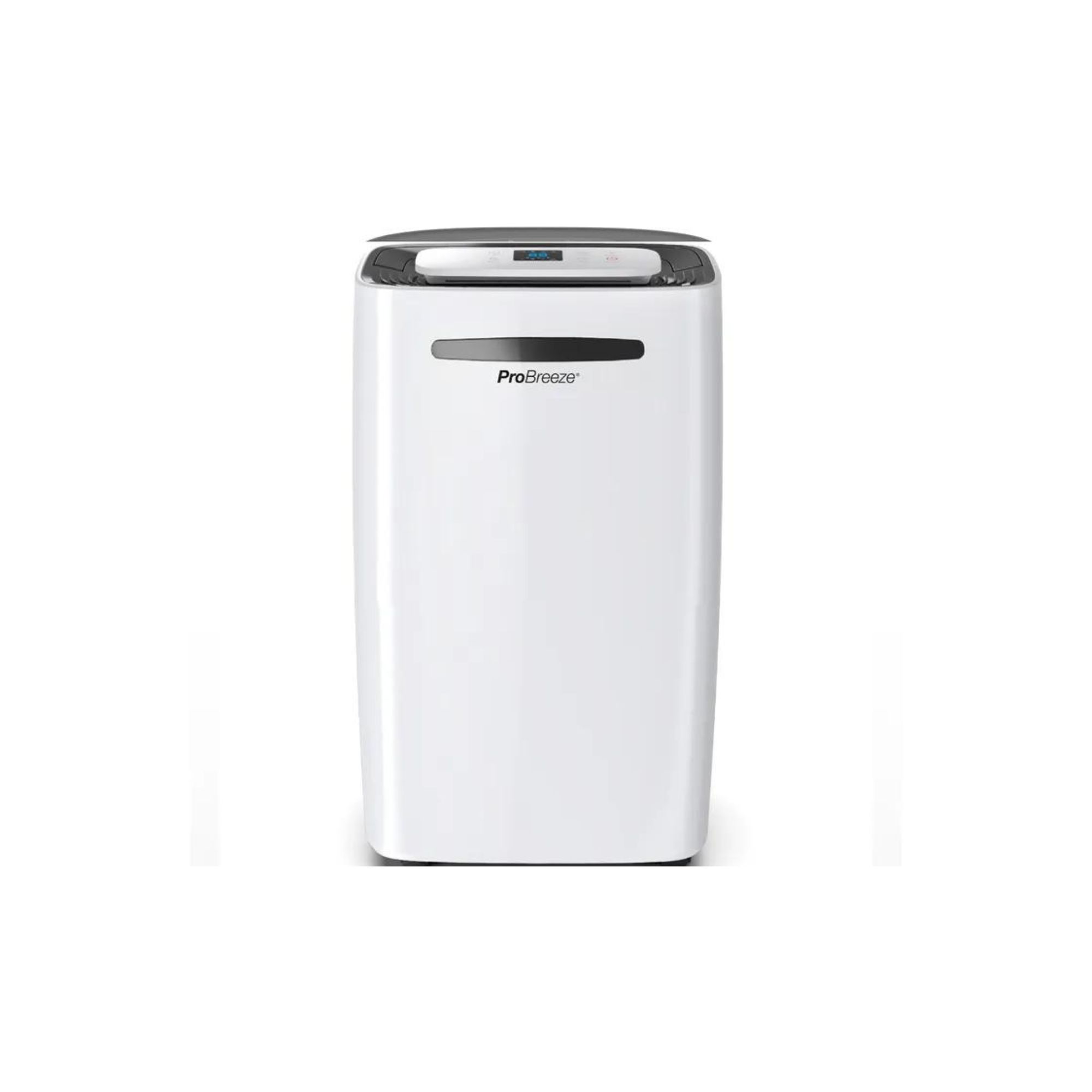
The best dehumidifier for dampness
A wet, damp room is the worst, but thanks to this Pro Breeze model being able to hold a large capacity of 5.5L of water, removing 20L per day, your room will be left clean and moisture-free. This dehumidifier also has many cool features that are worth checking out.

The best dehumidifier for flats
Looking for a dehumidifier for your flat? Consider snagging the Wood's MRD10 model. It's petite in size but still powerful enough to draw in a lot of moisture. It even features a built-in handle, which makes moving the dehumidifier from room to room a breeze.
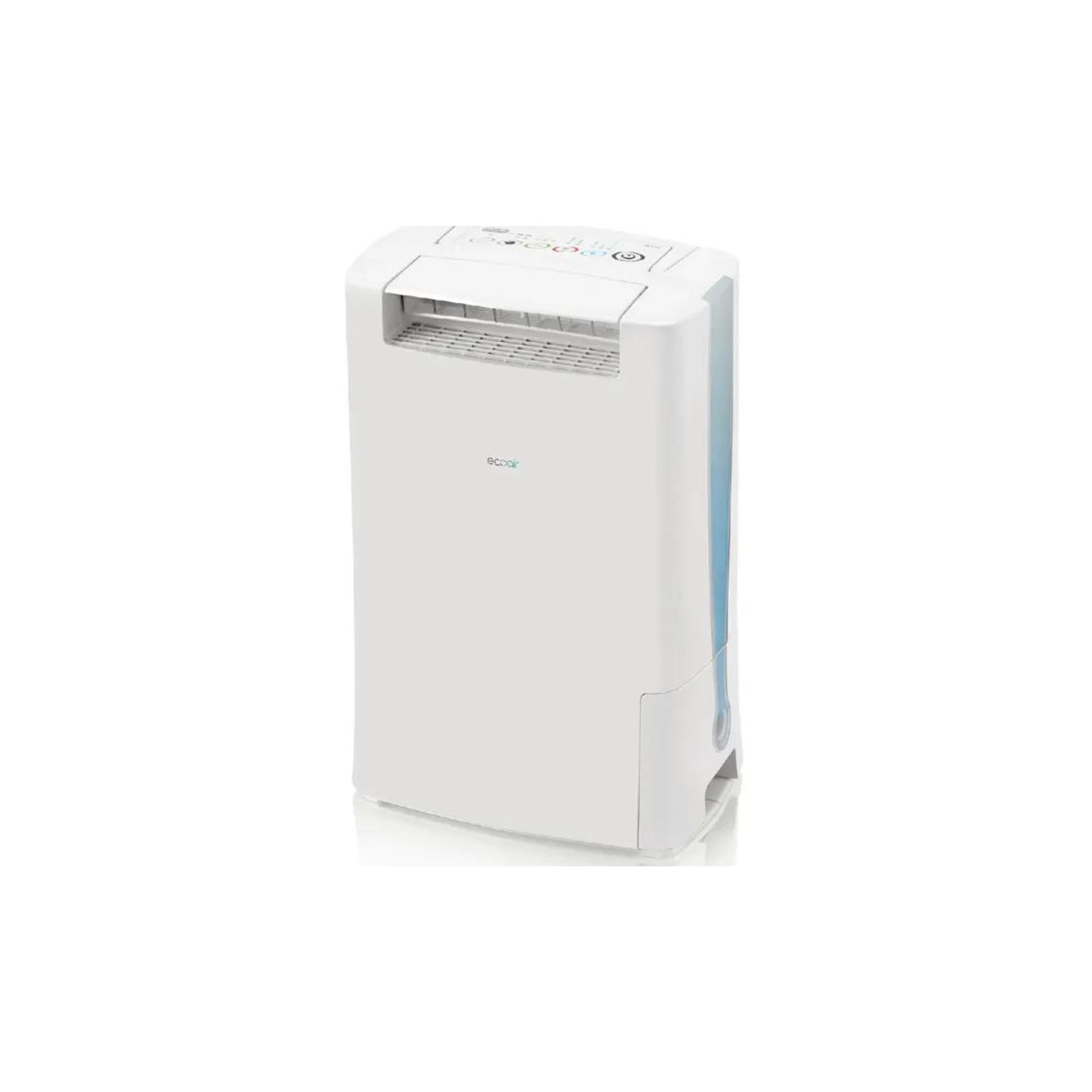
The best for drying laundry
The cool thing about dehumidifiers is that they can be used as a clothes dryer, which helps keep costs down. And this EcoAir dehumidifier is the best for drying clothes quickly. The Desiccant 8L features three drying modes and two laundry.
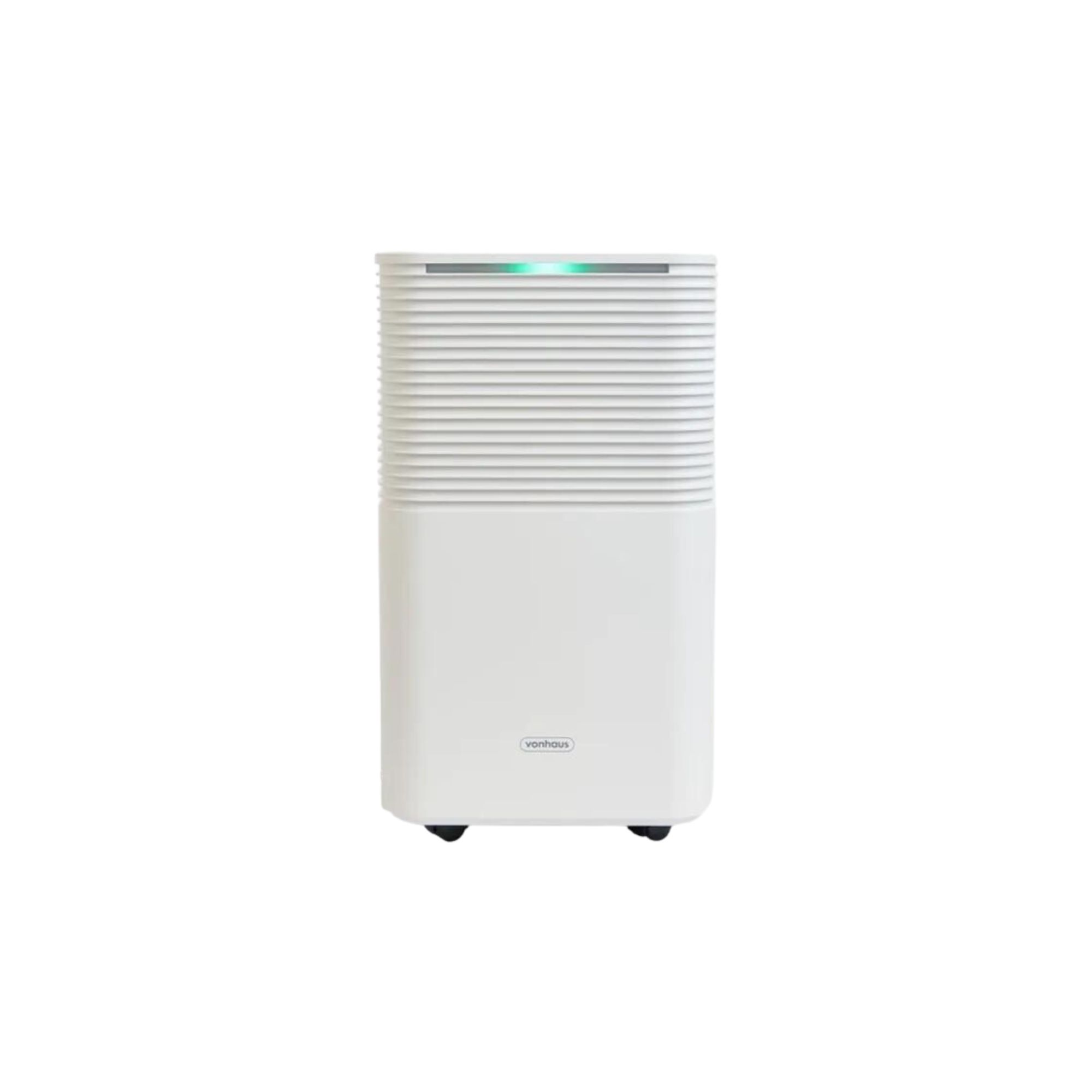
The best dehumidifier for small spaces
This Vonhause dehumidifier is the perfect option for smaller homes and tight storage space. It's lightweight, easy to maneuver, and has an automatic turn-off feature that comes in handy when its 2L tank has reached capacity.
Is it better to undersize or oversize a dehumidifier?
You are undoubtedly better off buying a dehumidifier that is too big, rather than one that is too small for your space and humidity needs. In fact, a too-small dehumidifier could actually prove to be ineffective and expensive, in the wrong space.
“If your dehumidifier is too small for the size of space, you’ll find you need to run it for long periods of time to have any effect. This makes it costly to run, too.” Johnson says.
In fact, Michael even explains that particularly damp properties should probably oversize their dehumidifier, anyway. "In the event of the property having high moisture levels, perhaps from a damp problem, drying washing indoors and from its occupants, it is best to buy a 'one size up' more powerful dehumidifier. For larger properties in these conditions, it may even be worth considering a second dehumidifier."
You’re also unlikely to experience any negative effects from buying a 'too-big' dehumidifier.
"The only real disadvantages to using too large a dehumidifier in a domestic setting (too large here would be no larger than a 25-litre model) is if you have put too noisy a machine in too small a space," Michael says. “Never go more than 42 decibels in a flat for example; the noise will be too much, and you will end up hating the machine and turning it off."
To ensure a dehumidifier is as quiet as can be, it's also important to remember how to clean a dehumidifier, to keep it running smoothly.
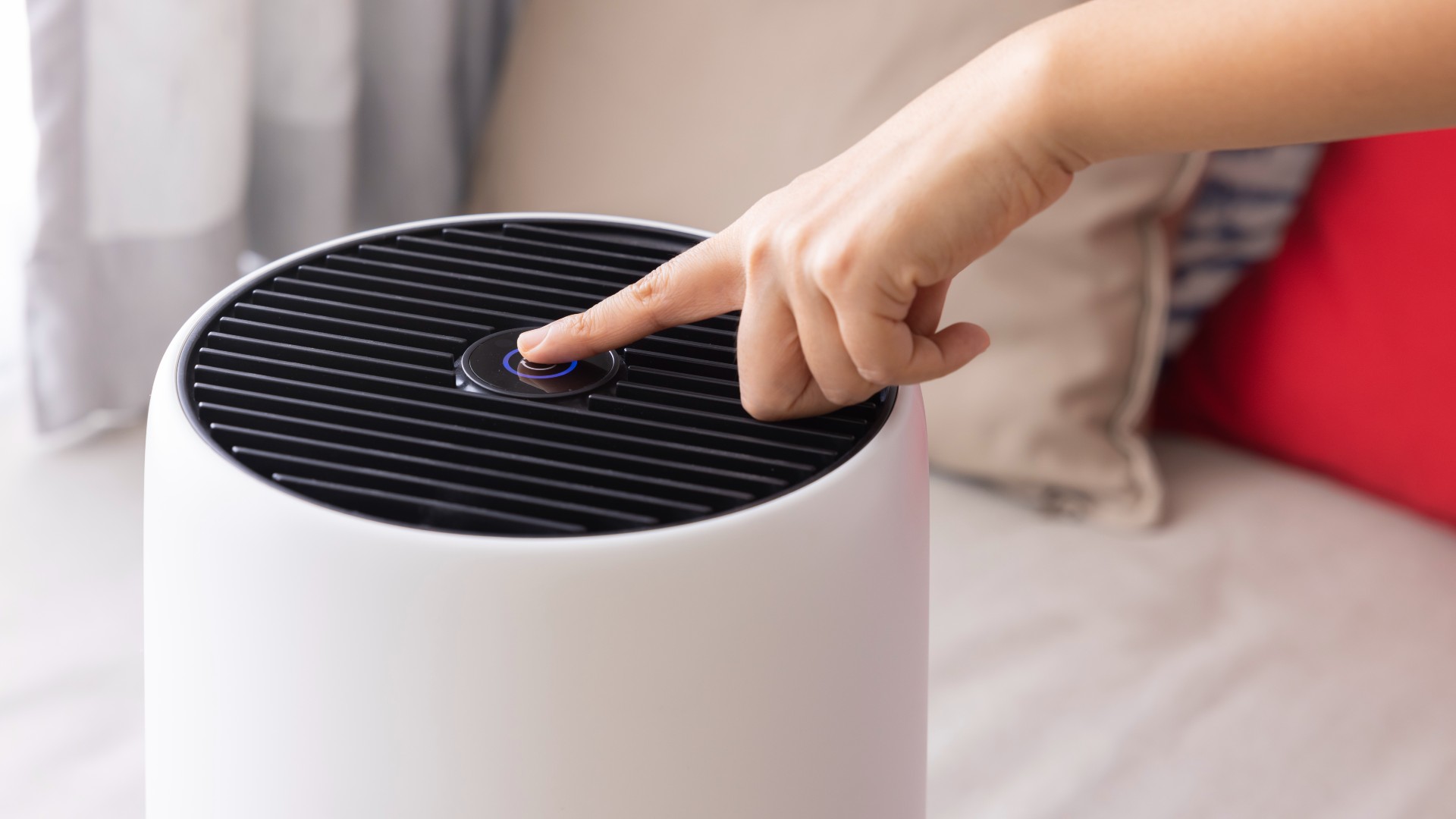
Will a dehumidifier in one room help the whole house?
Usually, just one dehumidifier, placed in one spot, should do the trick to remove as much moisture as possible from your entire home. However, Chris advises that placing it inside a room may limit its capabilities when it comes to tending to the whole house.
“Dehumidifiers are most commonly positioned in landings, hallways or kitchens to service the overall property. This is sufficient for general use where the machine is set to achieve a target humidity,” he says.
"Placing it in one room with the door closed will limit its ability to service the entire property," Chris continues. "For general dehumidification, placing a dehumidifier in a central location and leaving all the internal doors open is best." Consider this the best method to determine the best dehumidifier for a bathroom.
The one instance where you may want to use your dehumidifier in one room with the doors closed is when you have damp washing drying, as a dehumidifier can be a great tool for drying clothes. This should help clothes dry faster, and prevent the excess moisture from your laundry from spilling out into the rest of your home.
Chris explains, “For drying wet washing, we recommend moving the dehumidifier into a small, closed room near the wet washing and running it in laundry mode – this is when it may be beneficial to place it in one room.
"Likewise, in the event of a flood or if there’s a particularly damp area of the property, positioning the dehumidifier near to the problem is recommended, rather than just in a general position within the home."
Amy Hunt is an experienced digital journalist specialising in homes, interiors and hobbies. She began her career working as the features assistant at woman&home magazine, before moving over to the digital side of the brand where she eventually became the Lifestyle Editor up until January 2022. Amy won the Digital Journalist of the Year award at the AOP Awards in 2019 for her work on womanandhome.com.
-
 We're in awe of Sienna Miller's easy-going and 'piece-y' hairstyle and how perfect it is for spring
We're in awe of Sienna Miller's easy-going and 'piece-y' hairstyle and how perfect it is for springThis laid-back hairstyle is - quite literally - making waves this season
By Naomi Jamieson
-
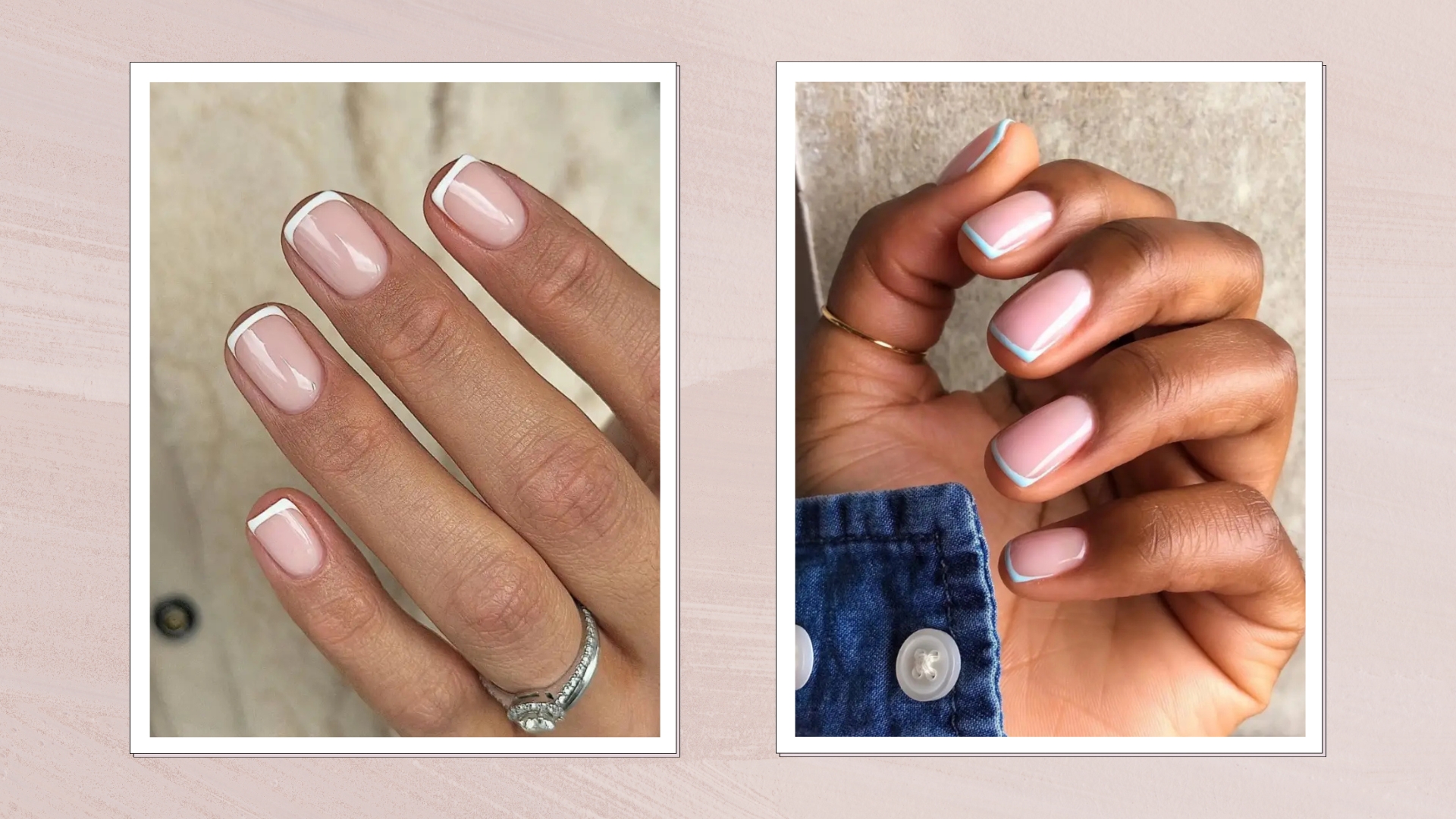 We never thought we'd see this 'dated' manicure make a chic comeback, but here it is - and we're on board
We never thought we'd see this 'dated' manicure make a chic comeback, but here it is - and we're on boardClean and angular, short square French tips are a go-to this season for a practical but stylish manicure...
By Naomi Jamieson

